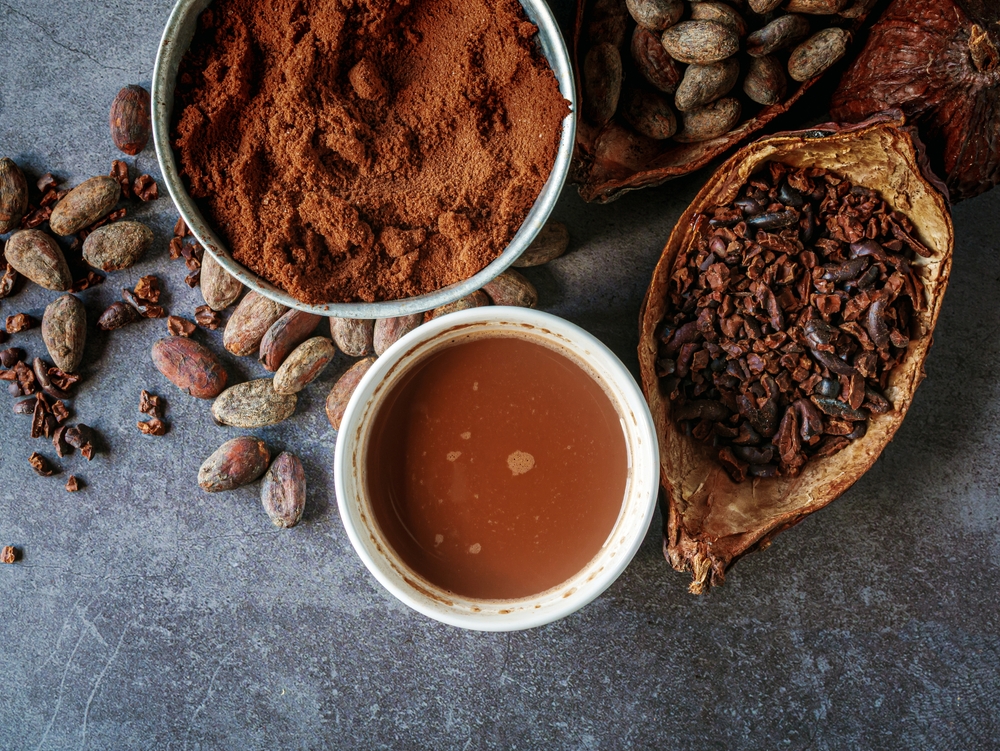
High Cocoa Prices Bring Costlier Halloween Treats
The year 2024 was a record-breaking one for cocoa, as the price of continuous futures (CC1) surpassed the psychological threshold of 10,000 USD per ton as early as April. This was followed by several months of correction before prices surged even higher in December, reaching an all-time peak of nearly 12,000 USD per ton. The commodity entered the current year at roughly the same level.
A turning point came in mid-May, after which cocoa entered a correction to its current level of 5,581 USD (as of November 13, 2025). From a percentage standpoint, this recent decline represents a 27.43% loss over the past year, while over the last five years, the price remains “in the green” with a gain of more than 138%. *

Source: TradingView.com*
Expensive Chocolate Indulgence
The high price of the commodity has been reflected on store shelves around the world. In one of the largest markets globally – the United States – demand for chocolate sweets rises sharply ahead of Halloween celebrations. Data from a survey conducted by Circana showed that chocolate prices during this period increased by roughly 30% year over year. Another study by The Century Foundation, cited by CNN, found that since last year’s holiday, the price of American candies has risen by just under 11%. For comparison, the figure in the previous year was only 2.1%. Breaking it down further, for example, Reese’s chocolate-peanut butter cups have become 8% more expensive since 2024, while a mixed pack of Hershey chocolates rose by 22%. The Century Foundation’s data also included non-chocolate products, among which lollipops such as Tootsie Roll saw the steepest increase – up by as much as 34%.
The Slovak market is no exception to this trend. According to data from the Statistical Office of the Slovak Republic, published in early July 2025, Slovak consumers paid 22% more in May this year for a 100-gram bar of chocolate compared to the previous year, while over the past two years, the price has increased by 69%. Interestingly, the survey also revealed that the average Slovak consumed around 70 chocolate bars in 2024, which, together with other sweets, amounted to more than 10 kilograms.
Environmental and Economic Impacts
The sharp rise in commodity prices is primarily due to the significant influence of climate and climate change. The world’s largest cocoa producers, Ivory Coast and Ghana, faced heavy rainfall alternating with high temperatures. Alongside unstable weather, threats from pests and diseases also damaged large quantities of plants and crops. Although cocoa prices are currently at a relatively lower level, the volatility of weather must be taken into account, as a repeat of last year’s situation is possible. Economic factors also play a role. High inflation, increased consumer spending, lower willingness to spend on non-essential items, and tariffs all contribute. Even though cocoa has been among the products exempted from tariffs since September, this exemption is conditional, for example, on the reciprocal tariffs imposed by the exporting country or the importance of the international relationship.
Will Candy Replace Chocolate?
Adverse factors are taking their toll on chocolate, and according to Circana, Americans are increasingly turning to other types of sweets, leading to a drop in interest to 44% compared to 52% in 2024. Other variables also come into play, such as the variety of flavours and appearance of candies and lollipops, as well as their appeal on social media compared to chocolate. These factors continue to drive purchases despite higher prices. The National Retail Federation estimated record sales for this year’s Halloween at up to 3.9 billion USD. The outlook for next year is somewhat more positive according to Wells Fargo, while reports that prices could stabilize, according to CNBC. In addition to some manufacturers planning modest price increases, they will also focus on other products. Further steps may include reducing the cocoa content in products, replacing it with alternative fillings, or even decreasing package sizes. Even though the commodity price is somewhat lower and manufacturers purchase it well in advance, other variables must also be considered – labour costs, fuel and transportation, as well as macroeconomic indicators such as inflation and tariffs.
* Past performance is not a guarantee of future results

